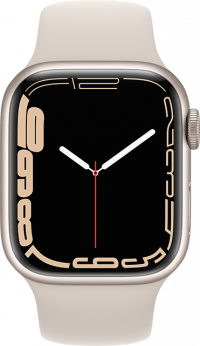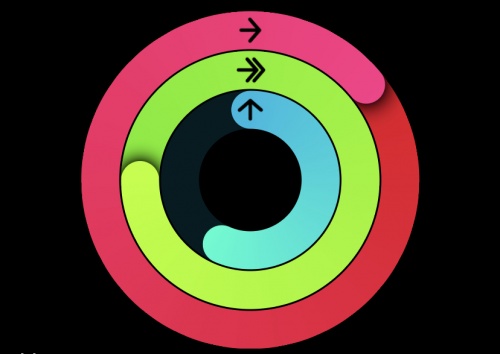Difference between revisions of "Apple Watch"
| Line 58: | Line 58: | ||
The American Journal of Medicine highlights the limitations of the health benefits that the Apple Watch can provide through its personalized health data. While wearable devices are designed to promote healthy behaviors and decrease risk for chronic diseases, current literature indicates that wearable devices provide little benefit on chronic disease health outcomes. Research has found that while wearable devices can motivate and accelerate physical activity, data does not suggest consistent health benefits. https://www.amjmed.com/article/S0002-9343(19)30553-4/pdf | The American Journal of Medicine highlights the limitations of the health benefits that the Apple Watch can provide through its personalized health data. While wearable devices are designed to promote healthy behaviors and decrease risk for chronic diseases, current literature indicates that wearable devices provide little benefit on chronic disease health outcomes. Research has found that while wearable devices can motivate and accelerate physical activity, data does not suggest consistent health benefits. https://www.amjmed.com/article/S0002-9343(19)30553-4/pdf | ||
| − | == Internet of Things == | + | === Internet of Things === |
The internet of Things (IoT) covers objects and devices used by a user that are connected to the internet. Connected Devices have the ability to collect sensitive information on users and their daily activity. <ref>https://www.commonsense.org/education/articles/privacy-and-security-evaluation-of-the-apple-watch</ref> The Internet of Thing enhances human comfort and convenience, it has raised questions amongst academics about security and privacy. | The internet of Things (IoT) covers objects and devices used by a user that are connected to the internet. Connected Devices have the ability to collect sensitive information on users and their daily activity. <ref>https://www.commonsense.org/education/articles/privacy-and-security-evaluation-of-the-apple-watch</ref> The Internet of Thing enhances human comfort and convenience, it has raised questions amongst academics about security and privacy. | ||
<br /> | <br /> | ||
| Line 66: | Line 66: | ||
At the same time, Internet of Things devices can provide rich information to help collect data on crimes, from a forensic perspective. <ref>https://link-springer-com.proxy.lib.umich.edu/content/pdf/10.1007%2F978-3-319-99277-8.pdf</ref> | At the same time, Internet of Things devices can provide rich information to help collect data on crimes, from a forensic perspective. <ref>https://link-springer-com.proxy.lib.umich.edu/content/pdf/10.1007%2F978-3-319-99277-8.pdf</ref> | ||
| − | == Increasing disparities == | + | === Increasing disparities === |
Scholars note that the Apple Watch may indirectly contribute to the perpetuation inequality amongst minority populations. Scholars note that the smartwatches are notably expensive products, making the purchase of this technology not accessible to every socioeconomic and demographic population. It is noted that the majority of smartwatches are bought by young people with higher socioeconomic status. <ref>https://www.frontiersin.org/articles/10.3389/fcvm.2020.615927/full</ref> Access to healthcare is lower for low-income populations, leading the inaccessibility of lower populations to gain access to health data through their Apple Watch to lead to further discrimination against people who cannot afford the watches. Further, scholars have uncovered that the accuracy of algorithms for detecting certain health related conditions through the Apple Watch is not representative. Namely, the participants of the Apple heart study were on average 41 years old and 68% were white. <ref>https://www.nejm.org/doi/full/10.1056/NEJMoa1901183</ref> Therefore, the algorithms were not evaluated for a diverse group of users, causing there to be a lack of algorithmic accuracy for these populations. | Scholars note that the Apple Watch may indirectly contribute to the perpetuation inequality amongst minority populations. Scholars note that the smartwatches are notably expensive products, making the purchase of this technology not accessible to every socioeconomic and demographic population. It is noted that the majority of smartwatches are bought by young people with higher socioeconomic status. <ref>https://www.frontiersin.org/articles/10.3389/fcvm.2020.615927/full</ref> Access to healthcare is lower for low-income populations, leading the inaccessibility of lower populations to gain access to health data through their Apple Watch to lead to further discrimination against people who cannot afford the watches. Further, scholars have uncovered that the accuracy of algorithms for detecting certain health related conditions through the Apple Watch is not representative. Namely, the participants of the Apple heart study were on average 41 years old and 68% were white. <ref>https://www.nejm.org/doi/full/10.1056/NEJMoa1901183</ref> Therefore, the algorithms were not evaluated for a diverse group of users, causing there to be a lack of algorithmic accuracy for these populations. | ||
Revision as of 16:05, 10 February 2022
|
An Apple Watch is a line of smartwatches, or wearable computers that users can wear around their wrists, from the technology company Apple[1]. The smartwatch allows users to perform a variety of tasks. In order to function, the watch needs to be paired with other Apple products, specifically an iPhone5 model or later. [1]. The Apple Watch is equipped with many different hardware capabilities that allows users to interact with the watch in a variety of ways. Two important features of the device include its ability to be used as a communication tool and fitness tracking device. There are also different Apple Watch models that users can choose from, which each offer a unique array of features to the users. In terms of the public perception of the Apple Watch, it has gained both negative and positive critics, but has overall been a profitable product for Apple.
In looking at the ethical considerations of the product, it is important to note that the Apple Watch collects sensitive user data, including health related data. Further, as a device that connects with other Apple products leading scholars to point out the many potential security concerns related to the Internet of Things.
Contents
Hardware Capabilities
The hardware installed on the Apple Watch, has an accelerometer, gyroscope, pedometer, optical heart rate sensor, and force-touch haptic feedback. This gives it the ability to detect information on when the user touches the watch display, detects their steps, heart rate, and hours of sleep. The watch also has a multidirectional microphone that allows it to listen and process multiple conversations around and involving the user. [2]
Apple Watch Features
The Apple Watch offers a variety of features to its users, allowing them to engage with the watch in their everyday lives. Unlike historically used wristwatches, the Apple Watch allows users to interact with the watches face, through tapping on the small touchscreen interface. In addition to the touchscreen interface, the apple watch is equipped with a speaker that allows the user to interact with the watch. The watch is also equipped with a "digital crown," is a small button on the side of the watch that users can rotate and press in order to scroll through and engage with content on their watch. The Apple Watch comes equipped with a charger, which is used to recharge the battery after use. Similar to the iPhone, the Apple Watch typically lasts about a full day's use before needing to recharge, depending on usage.
Communication features
The Apple Watch allows users to see who is calling or texting them at any given time, given that the watch is properly connected to wifi, their nearby iPhone, or is equipped with GPS capabilities. If the Apple Watch model is equipped with GPS capabilities, and the watch has been connected to a wireless plan with a phone provider, the Apple Watch does not need to be near ones phone in order to send and receive calls and text messages. If an apple watch does not have cellular connectivity, the watch will use bluetooth technology to connect to your nearby iPhone (up to 12 feet away) or through wifi. The "walkie-talkie" feature allows users to connect with other Apple Watch users; however, both Apple Watch users need to have a watchOS 5 operating system or later. [3] In order to use the Walkie-Talkie features, users must send and accept friend invitations through the "Walkie-Talkie app," and then use the touch and hold button to speak directly to other users like a traditional "Walkie-Talkie."
Fitness Tracking
The Apple watch offers fitness tracking in the form of Activity Rings which is broken down into three colored rings. The first is the red Move ring which allows users to track how many calories they have burned by moving throughout a 24 hour period. The second is the green Exercise ring that allows users to track the minutes of brisk activity they have completed that day. Finally, the blue Stand ring allows users to track how many hours they have stood in a 24 hour period. [4] The user can define their activity goals for each type of ring, and the ring visually closes once the user achieves that goal.
The visualization shown above demonstrates the different types of rings, as well as the users progress in completing the goals associated with each ring.
Apple Watch Models
The Apple Watch was first released in 2015, with three distinct models; however, the genesis of the Apple Watch reportedly started with Jony Ive, Apple's chief designer, in 2011. [5]. Since 2015, Apple has released multiple other models which provide different features to the user including Apple Watch Series 1, Apple Watch Series 2, Apple Watch Series 3, Apple Watch Series 4, Apple Watch Series 5, Apple Watch SE, Apple Watch Series 6, and Apple Watch Series 7. An Apple Watch can be bought through the Apple website starting at $199 for the Series 3 model, and $399 for the Series 7 model. The larger displays (45mm) cost users more compared to the smaller screen displays (45mm). There are also other offered upgrades that will affect the price of the watch. [6]
The Apple Watch has evolved over time, offering more high-tech features to its users. For example: While the Series 1 Apple Watch only had a 8GB capacity, the Series 7 Apple Watch has a 32 GB capacity. Other notable upgrades that the Series 7 Apple Watch offers over the Series 1 Watch includes: 50 percent more screen area, GPS and GPS cellular models, water resistance (up to 50 meters).[7]
Additional Collaborations
Apple partnered with Nike+ to produce an apple watch for those who are passionate about fitness and the Nike brand. This watch was designed to synchronize with the "Nike Run Club" and "Nike Training Club" apps. Apple partnered with Hermès as well, to create an Apple Watch that emphasized bold, colorful leather bands and exclusive new watch faces for users. [8]
Public Perception
In terms of the public perception of the Apple Watch, it has gained both negative and positive critics, but has overall been a profitable product for Apple.
Ethical Considerations
The data collection abilities of the Apple Watch have lead to concerns about the privacy and security of that data. Further, concerns about the potential reliance on health related data as a replacement for professional medical care has been of rising concern. Additionally, there has been rising concern over the lack of security related to Internet of Things devices, such as the Apple Watch. Finally, there are concerns that the Apple Watch furthers systems of oppression towards underprivileged populations.
Data Privacy
Data privacy is defined as one's control over access to their own personal information.
Health Related Data
Smartwatches, such as the Apple Watch are equipped with features that allow the user to track health related data. In the medical field, the principle of non maleficence requires that medical actions are weighed against risks, benefits, and consequences. [9]. Researchers have argued that the accessibility of a user's own health data has been problematic as it violences the principle of non-maleficence.
For example, ECG monitoring on Apple watches which allows users to screen for atrial fibrillation, with the intent of early detection. Early detection of this arrhythmia can prevent adverse events such as stroke, by treating with anticoagulants. Although Apple smartwatch has an algorithm with a very high specificity, many people have still been notified of arrhythmia without having atrial fibrillation, leading to a false positive result. If the patient is aware of the potential benefits, the risks and the possible consequences of atrial fibrillation detection, the diagnostic can be done on the user's risk. However, the smartwatches analyzed do not provide any information comparable to traditional medical education, leading the patient to not be well-informed. Further, researchers argue that patients could overestimate the accuracy of the diagnostic capabilities of the watch and the over reliance on home monitoring of atrial fibrillation could lead to fewer face-to-face doctor visits. Researchers conclude that the over-reliance on smartwatches and the lower number of face-to-face doctor visits lead to a violation of the principle of non-maleficence. [10].
The American Journal of Medicine highlights the limitations of the health benefits that the Apple Watch can provide through its personalized health data. While wearable devices are designed to promote healthy behaviors and decrease risk for chronic diseases, current literature indicates that wearable devices provide little benefit on chronic disease health outcomes. Research has found that while wearable devices can motivate and accelerate physical activity, data does not suggest consistent health benefits. https://www.amjmed.com/article/S0002-9343(19)30553-4/pdf
Internet of Things
The internet of Things (IoT) covers objects and devices used by a user that are connected to the internet. Connected Devices have the ability to collect sensitive information on users and their daily activity. [11] The Internet of Thing enhances human comfort and convenience, it has raised questions amongst academics about security and privacy.
Internet of Things & Privacy Attacks
Researchers have uncovered that since Internet of Things technology was not designed with security in mind, as it was designed to provide novel features while minimizing device cost and size, the devices have limited hardware resources. This means that security tools cannot be installed in Internet of Things devices, which makes it an easy target for cyber crimes. There are 3 typical ways that an agent can threaten IoT systems: 1. stealing information (ie.user credentials) 2. tracking user information (ie. location) and 3. taking control of a system (ie. through malware). [12] A single Internet of Things device can compromise other connected devices, leading the collection of compromised devices to be used to attack computing assets and services. This means that criminals can leverage the power of Internet of Things technology can be used to hack connected devices, such as pacemakers, and cause potential physical harm to others. [13]
At the same time, Internet of Things devices can provide rich information to help collect data on crimes, from a forensic perspective. [14]
Increasing disparities
Scholars note that the Apple Watch may indirectly contribute to the perpetuation inequality amongst minority populations. Scholars note that the smartwatches are notably expensive products, making the purchase of this technology not accessible to every socioeconomic and demographic population. It is noted that the majority of smartwatches are bought by young people with higher socioeconomic status. [15] Access to healthcare is lower for low-income populations, leading the inaccessibility of lower populations to gain access to health data through their Apple Watch to lead to further discrimination against people who cannot afford the watches. Further, scholars have uncovered that the accuracy of algorithms for detecting certain health related conditions through the Apple Watch is not representative. Namely, the participants of the Apple heart study were on average 41 years old and 68% were white. [16] Therefore, the algorithms were not evaluated for a diverse group of users, causing there to be a lack of algorithmic accuracy for these populations.
See also
References
- ↑ https://searchmobilecomputing.techtarget.com/definition/Apple-Watch
- ↑ https://www.commonsense.org/education/articles/privacy-and-security-evaluation-of-the-apple-watch
- ↑ https://learning-oreilly-com.proxy.lib.umich.edu/library/view/apple-watch-for/9781119558637/c05.xhtml#h2-3
- ↑ https://learning-oreilly-com.proxy.lib.umich.edu/library/view/apple-watch-for/9781119658665/c08.xhtml#h2-6
- ↑ https://appleinsider.com/inside/apple-watch
- ↑ https://www.apple.com/shop/buy-watch/apple-watch
- ↑ https://www.apple.com/watch/compare/
- ↑ https://learning-oreilly-com.proxy.lib.umich.edu/library/view/apple-watch-for/9781119558637/c01.xhtml#h2-2
- ↑ https://pubmed.ncbi.nlm.nih.gov/30916041/#:~:text=The%20principle%20of%20nonmaleficence%20requires,level%20of%20competence%20and%20training
- ↑ https://www.ncbi.nlm.nih.gov/pmc/articles/PMC7843431/
- ↑ https://www.commonsense.org/education/articles/privacy-and-security-evaluation-of-the-apple-watch
- ↑ https://web-s-ebscohost-com.proxy.lib.umich.edu/ehost/detail/detail?vid=0&sid=cbf01992-81a8-48e6-af22-021502434a67%40redis&bdata=JnNpdGU9ZWhvc3QtbGl2ZSZzY29wZT1zaXRl#AN=153038918&db=a9h
- ↑ https://link-springer-com.proxy.lib.umich.edu/content/pdf/10.1007%2F978-3-319-99277-8.pdf
- ↑ https://link-springer-com.proxy.lib.umich.edu/content/pdf/10.1007%2F978-3-319-99277-8.pdf
- ↑ https://www.frontiersin.org/articles/10.3389/fcvm.2020.615927/full
- ↑ https://www.nejm.org/doi/full/10.1056/NEJMoa1901183
[[Category:]] [[]]


